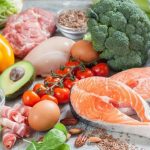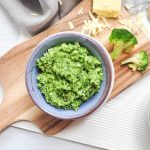
If you suffer from high blood pressure, are prone to fluid retention, or have been advised by your doctor to moderate your sodium intake, then eating low salt is essential to ensure your well-being. Beyond moderating the use of this seasoning in the preparation of dishes, it is essential to identify all those foods that have an excess of salt to avoid eating them in order to stay healthy. We give you some basic recommendations so you can discover how to eat low-salt successfully.
Step: 1
Sodium is essential for our body to be healthy, working together with potassium to maintain the balance of fluids in our body, promote our digestion and help conduct nerve impulses. However, when it is ingested in excess, it can promote increased blood pressure, fluid retention, and the appearance of circulatory problems, increasing the risk of heart disease that puts our well-being at risk.
Since most of the sodium we eat is found in salt, moderating your intake is essential to maintaining our health.
Step: 2
The first step to eating low in salt is, of course, to reduce the use of this seasoning in the preparation of our dishes. It is important that during cooking we choose to use different spices that add flavor to the food and at the same time help us to reduce the salt that we add to our dishes, in this way we can maintain the health of our heart without sacrificing the flavor of the food.
Step: 3
There are many foods that we frequently consume that have high levels of salt, among the most prominent are canned foods and foods, which contain a large amount of sodium. That is why it is recommended to moderate the consumption of products such as:
- Olives
- Pickled vegetables like gherkins or carrots
- Canned tuna, unless low-salt
- Sardines, anchovies, cockles, or any canned mollusk
Step: 4
Another aspect that is important to take care of if our goal is to eat low in salt is the intake of sausages. These types of products have a large amount of salt used in their preparation and conservation, so they are not suitable if we want to reduce sodium consumption.
It is advisable to avoid products such as sausages, Serrano and normal ham, mortadella, chorizos, bacon, and smoked meats. Instead, it is suggested to opt for lighter alternatives such as turkey or, failing that, low-salt ham. This could make a big difference, especially in patients with a diet rich in these types of products.
Step: 5
The recommended amount of sodium per serving is 100 mg or less, and although we usually do not pay much attention to this detail, it is important to read food labels and know how to identify those products rich in salt. Some of the options that it is convenient to remove from your diet are:
- Packaged soups and creams
- Seasoning cubes or seasoning salts
- Sauces such as soy, English, Worcestershire, or ketchup
- Commercial dressings
- Flavored concentrates such as beef or poultry concentrate
- Bottled tomato juice
- Prepared and packaged food
- The junk food
Instead, it is recommended to prepare homemade low-salt soups, creams, sauces, and dressings, much more nutritious and healthy than packaged products, in this way we can control the presence of sodium while still enjoying these options. It is also important to avoid prepared or junk food and opt for homemade foods.
Step: 6
To eat low in salt, it is important to take out of the diet all kinds of snacks such as chips, corn chips, wheat chips, cheese chips, or nuts with added salt, since their sodium intake is very high while their nutritional benefits, except for of nuts, are usually limited.
If you are looking for salt-free snack alternatives, then you should opt for healthy foods such as fresh fruits, nuts without added salt or sugar, yogurt, or rice cakes, and options that will help you maintain the health of your heart.
Step: 7
Cheeses are also food rich in salt, especially cured ones, so it is very important to eat them in moderation. Instead, it is recommended to consume low-salt fresh cheeses such as cottage cheese or any other presentation that indicates that it is free of added salt.
Step: 8
And of course, when eating low in salt it is essential to add fresh fruits, vegetables, meat, and fish to our diet made in simple and delicious preparations. Avoid all those dishes served with sauces or gratin and fried, as they will contain a large amount of salt, instead opt for foods prepared by steaming, grilling, boiling, or baking in simple presentations and free of excessive seasonings.
When eating out it is possible to request foods without salt in addition to ordering salads without dressing and using a simple oil and vinegar dressing. It is also convenient that instead of having the salt shaker at hand with this condiment we fill it with a combination of spices such as parsley, oregano, pepper, rosemary, etc., to incorporate it into our dishes and give them flavor.
Step: 9
Last but not least, avoid drinking tap water, don’t forget that it contains lime which could be giving your body an unnecessary dose of sodium. Opt for water-softening filters or consume bottled water low in minerals for greater peace of mind.




